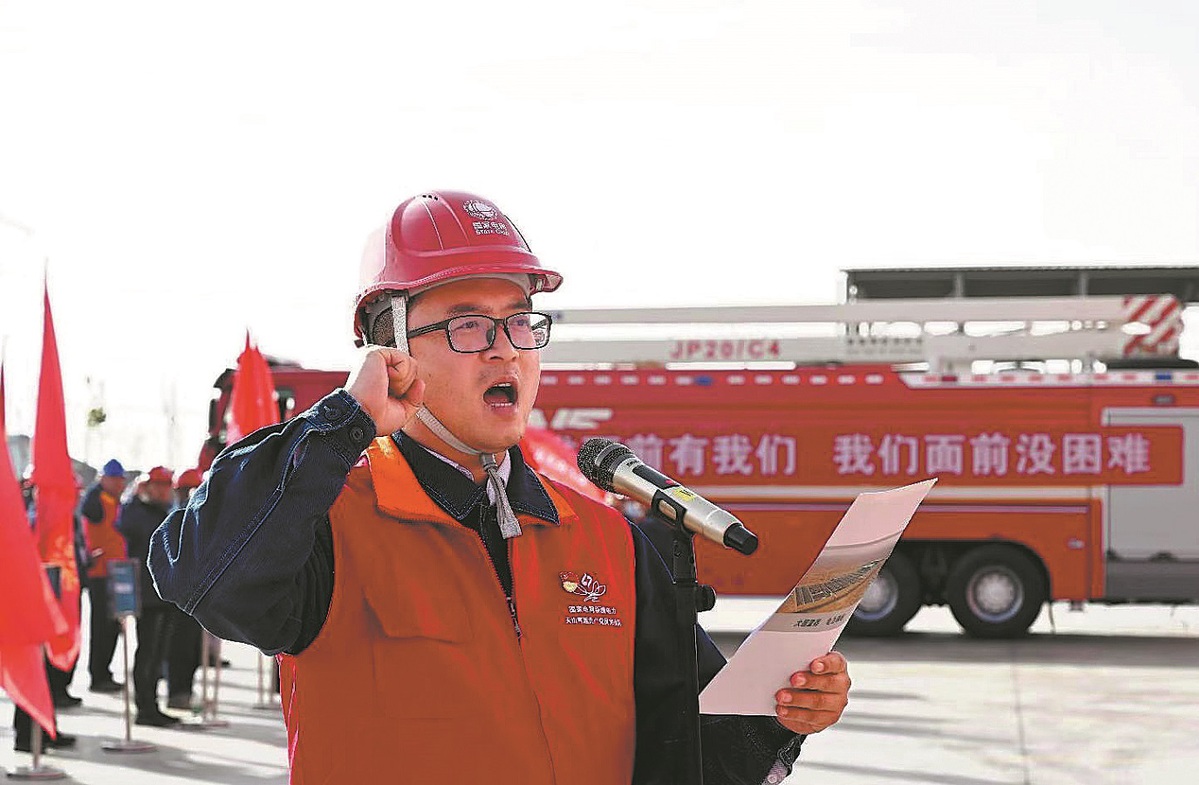Xinjiang powers ahead as nation's energy distributor
Advances in green technology, improved electricity transmission infrastructure help region achieve goals


Electrons racing
With growing power production in Xinjiang and rising electricity demand in central and eastern regions of China, long-distance power transmission has become imperative.
Located in the barren Changji Hui autonomous prefecture, the Changji converter station — the beginning of the Changji-Guquan Ultra-High-Voltage Direct Current Transmission Project — can transfer power to Xuancheng, Anhui province, within 0.01 second.
The project, which began operating on Sep 26, 2019, stretches through regions of Xinjiang, Gansu, Ningxia, Shaanxi, Henan and Anhui. Designed and constructed domestically, the project is the most technologically advanced ultrahigh voltage transmission project with the world's highest voltage level, the largest transmission capacity, and the longest transmission distance.
"Compared with alternating current, direct current offers constant voltage and direction, lower energy loss and superior efficiency for long-distance transmission," said Wang Hong, head of the Changji converter station. "From Xinjiang to Anhui, power transmission loss through the 3,293-kilometer project is approximately 5 percent."
When Wang Hong came to Changji to build the station in 2017, there was nothing but Gobi wilderness. Now the area has housing for station staff and the company has planted trees to improve the residential environment.
"In the past we had to commute by long-distance bus rides. Thanks to the new railway to Zhundong, we can reunite with our families in a safer manner," Wang said, adding you can create a "good life" in the tough environment.
Each year, the Changji-Guquan project transmits about 66 billion kWh of electricity annually to East China. This transmission reduces coal transportation by 30.24 million tons, equivalent to 25,000 freight trains (each with 20 carriages) and cuts soot emissions by 24,000 tons, sulfur dioxide by 149,000 tons, and nitrogen oxides by 157,000 tons.
























